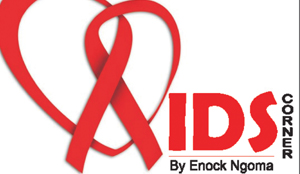 THE Zambian Project for Actively Curing Tuberculosis (ZAMPACT) operating under the ZAMBART project, has initiated programmes leading to the World TB Day that falls on March 24, 2014.
THE Zambian Project for Actively Curing Tuberculosis (ZAMPACT) operating under the ZAMBART project, has initiated programmes leading to the World TB Day that falls on March 24, 2014.
Zambia is a high burden country for TB and HIV. Up to 70 per cent and around 50 per cent of TB suspects of all TB cases are HIV co-infected.
According to the ZAMPACT project, the diagnosis of TB in Zambia still poses a challenge, like in other resource limited settings.
The main stay for TB diagnosis in Zambia is sputum smear microscopy using Ziehl Neelsen (ZN) staining.
This method has a low sensitivity for TB diagnosis and this sensitivity is even lower in over burdened laboratories and in HIV positive individuals. Sensitivity can be as low as 20 per cent in these settings.
Given this situation, clinicians may miss cases of tuberculosis or may over diagnose tuberculosis resulting in a high number of patients starting TB treatment that do not have a confirmed diagnosis.
Kanyama and George communities are both high burden communities for TB and HIV. In 2011, both clinics notified more than 600/100,000 population TB cases.
In Kanyama, between 2008 and 2011, among all pulmonary TB cases, approximately 30 per cent of all notified cases had a confirmed diagnosis of TB. In George, for the same period, approximately 40 per cent of all pulmonary cases of TB had a confirmed diagnosis.
Study procedures
1. Community mobilisation activities aim to raise awareness of tuberculosis so that symptoms can be recognised early and also raise awareness of benefits of early diagnosis. Various activities are conducted including drama, distribution of information leaflets, door-to- door campaigns, and health talks.
2. Open access points allow patients to submit sputum directly to the TB services for tuberculosis screening without waiting to see a clinician. Open access points aim to bypass a major barrier to TB diagnosis; overcrowded busy clinics with long waiting times.
3. Improved diagnostic tools: GeneXpert and fluorescent microscopy have been placed in the study clinics replacing the ZN microscopy. These tools are both more sensitive ZN microscopy.
4. Streamlining access to diagnosis with geneXpert for those patients likely to benefit. This allows for HIV positive patients or patients with an abnormal chest x-ray to access diagnosis with geneXpert. Patients who are HIV negative or CXR normal access diagnosis with microscopy(See Algorithm below)
The theme for this year’s World TB Day is: REACH THE 3,000,000 with the slogan “A TB Test, Treatment and cure for all.” It’smy hope that residents in these two communities will cooperate with the health workers and the volunteers involved in the programme.
Top line messages
TB is curable, but our current efforts to find, treat and cure everyone who gets ill with the disease are not sufficient.
Of the nine million people a year who get sick with TB, a third of them do not get the TB services that they deserve. Many of these three million people live in the world’s poorest, most vulnerable communities.
We believe that no one should be left behind in the fight against TB.
This World TB Day, we call for a global effort to find, treat and cure the three million and accelerate progress towards zero TB deaths, infections, suffering and stigma.
To reach the three million and move towards eliminating TB as a public health problem we will need to aggressively scale up TB programmes, especially for the most vulnerable groups and in hotspots, while
investing in research and development for the new tools that we urgently need.
If we are successful we can ensure that we meet the Millennium Development Goals, accelerate the fight against TB and start to talk realistically about eliminating TB as a public health problem in the next two decades.
Campaign
People all over the world, from TB programme managers to frontline health care providers will make a call to Reach the three million and provide a TB test, treatment and cure for all.
The theme will act as a rallying call for global advocates, while offering national TB programmes and community groups the opportunity to show how they will contribute to this global goal.
Messages can be tailored by region, sub-region and country with relevant figures, and focussed on particular vulnerable groups among the three million, for example women, children, impoverished communities, migrants or prisoners.
Before I pen off, I would like to thank the many people that have continued to send in reactions towards the voluntary medical male circumcision article I wrote a few weeks ago. In particular, I will in due course respond to one reader who asked, what are the merits and demerits of male circumcision?
For comments contact me on knoxngoma@gmail.com or SMS/call +260955883143






